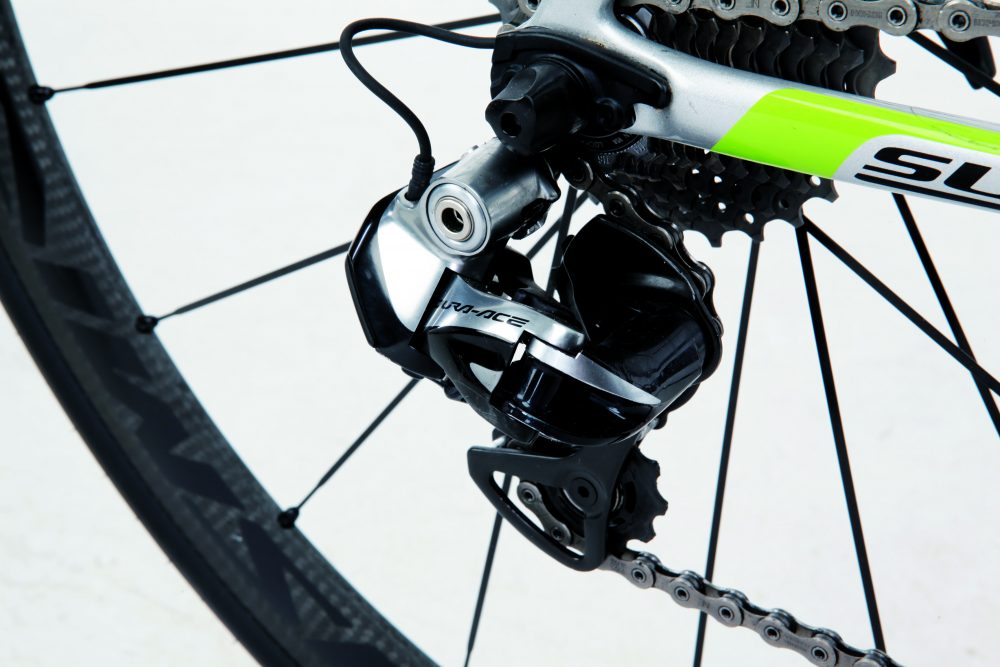Cannondale SuperSix Evo Hi-Mod Team review
A bike that looks great and handles incredibly well

If you are a fan of the previous SuperSix Evo, you’ll love this one even more. Cannondale has taken everything that made the old one special and made it better. It is ever so slightly lighter, but the main improvement is regards to handling and feel. The new Evo loses marks for the slightly antiquated wheels and BB30A, which can require attention. However, if you are in the market for a lightweight race bike and are the type of rider that likes to attack on climbs and descents it’s hard to look beyond the Evo. Being a bike that provides good levels of comfort, you can be confident the Evo won’t beat you up on long rides too. I love it
-
+
Looks superb
-
+
That paint!
-
+
Very light
-
+
Very stiff
-
+
Comfortable
- +
- +
-
-
BB30A bottom bracket requires maintenance
-
-
Expensive
-
-
Would be near-perfect with the new Mavic wheels
- -
You can trust Cycling Weekly.
Outwardly it looks very similar to the old model. The new frame, however, has been fully redesigned with superb results, creating a bike that earned a runner-up spot in our 2016 bike of the year.
That model came with Ultegra, but the one we have here is the Shimano Dura-Ace Di2-equipped Cannondale team bike.
Frame

The paintjob is dazzling. You really have to see it in the flesh to truly appreciate the iridescent glitter. The team issue paintjob is actually the heaviest Cannondale does.
Why? The Cannondale SuperSix Evo Hi-Mod is so light that mechanics almost always have to add weight to the bike to meet the UCI limit of 6.8kg and the beautiful paint helps, by adding roughly 200g of system weight. Don’t worry though — this bike still hits the scales at a feathery 6.41kg.
>>> Should the UCI weight limit be scrapped?
The standard frame (56cm) is heavier than the previous Evo (777g compared to 760g), but when you factor in the new lighter fork, integrated crown race and seatpost the new Evo has a system weight around 70g lighter.
With classic looks the Evo bucks the trend for overt aero styling, but Cannondale has made improvements to the aerodynamics using a similar approach to Merida and Canyon’s climbing bikes using truncated aero profiles (TAP).
The latest race content, interviews, features, reviews and expert buying guides, direct to your inbox!
This amounts to subtle aero tube shapes in key areas, resulting in a frame claimed to be six watts faster at 45kph.
>>> How much faster is an aero bike? (video)
There is also ‘Size Specific Construction’ giving each size frame a different carbon lay-up. The advantage of this is that the ride feel can be precisely tuned for each size, meaning you’ll get a great ride no matter what size bike you ride.
Geometry is race orientated, rewarding those who like an aggressive position.
Specification

Shimano Dura-Ace Di2 offers flawless shifting, but in place of the Dura-Ace chainset you get Cannondale’s own Hollowgram SpideRing SiSL2, inspired, apparently, by Porsche’s 911 GT3 wheels.
It not only looks classy, but independent testing has shown the single construction machined piece to be stiffer and lighter than Dura-Ace. The carbon FSA K-Force bar and stem provide good stiffness and low weight.
The Mavic Cosmic 40c wheels are very good and complement the stiffness. However, they are a little
antiquated with narrow 14mm rims and a ‘V’ shape profile.
I expect 2017 models to be fitted with Mavic’s new wheels, which are vastly superior, being both wider, better in crosswinds and offering much better braking.
Thinking about an upgrade?
Ride
If I were a professional cyclist, I would want this when heading into battle. It’s easily among the best handling bikes I have ridden.
When pushing to the limits on tight switchbacks, you can often detect some front or rear-wheel skip, but cornering on the Evo feels controlled, balanced and smooth.
The fork, head tube stiffness and geometry give a very agile and precise bike that can change direction like a missile. Cannondale could have made the Evo stiffer, but tuned the lay-up with more compliance to help it stick into the road, rather than bounce along the surface.
There is a niggle though. After about 3,300km, a click developed in the BB30A bottom bracket. I replaced the bearings without fuss, but experience tells me a threaded BB would have lasted longer without the need for attention.
Anecdotally, BB30 bottom brackets do seem to need more regular maintenance and a clicking BB can be hugely annoying.
Value
This team issue bike has a price tag to match. You can get lower spec, more affordable models, such as the Shimano Ultegra-equipped version with a £2,999 RRP.
As a pro bike it does struggle to compete on price with the likes of Canyon, but there are plenty of plus points. The SpideRing chainset, superb handling, iridescent paint and classic good looks certainly do it for me.
Plus it’s cheaper and lighter than a Pinarello.
Oliver Bridgewood - no, Doctor Oliver Bridgewood - is a PhD Chemist who discovered a love of cycling. He enjoys racing time trials, hill climbs, road races and criteriums. During his time at Cycling Weekly, he worked predominantly within the tech team, also utilising his science background to produce insightful fitness articles, before moving to an entirely video-focused role heading up the Cycling Weekly YouTube channel, where his feature-length documentary 'Project 49' was his crowning glory.